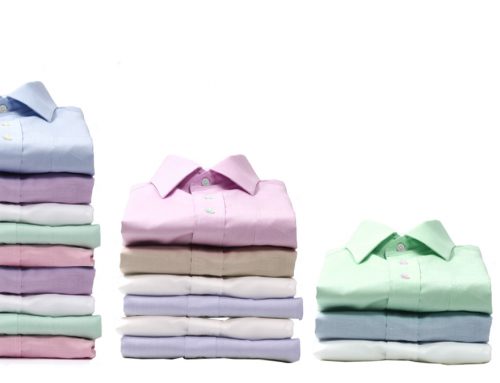Determine Current Liabilities
Now you have access to the aging of your inventory, the next step is to determine the level of liabilities that currently exist ‘in store’ – such as your spring styles.
To start, review the prior season product, in particular, any remaining holiday 2019 and the initial spring 1 2020 (sometimes called cruise wear) inventory. These spring styles have been viewed by your customers for many months; given their age most likely your optimal plan will be to fully write off this age of the product. Transferring to an outlet – unless an easy, inexpensive option – is probably not financially feasible, as the markdown/clearance cadence required to liquidate that older product will most likely ‘eat up’ any potential margin.
Be very diligent with Spring styles 1 and colors. Sometimes there may be colors that will trend into later spring/summer. If the bodies are relevant (and size sell-through is not to extreme), those specific garments can be ‘aged forward’ and assigned the summer codes, ultimately avoiding the initial write-off costs.
Obviously, the styles and colors information can be subjective. Such decisions need to be made with the full and complete agreement between merchants, design, and planning. All groups need to understand the ramifications of updating aging for colors, and must ensure any visual merchandising and web image presence is appropriately represented. Store management teams need to understand these aged forward styles are to be appropriately displayed and sold within the newer (more recent) deliveries. Without the combined effort of all teams, the results will not be effective.
Easter Inventory
Next, assess “Easter”, as part of the March/April assortments. Regardless of the style and color importance within your business, Easter has passed. The positive news is likely that most of the styles still remain in the DC; there may have been some representation with e-commerce, but this is probably the first (and least cost-prohibitive) “return to DC” which should occur. Unless a radical change is expected for the following fiscal year, we recommend saving the Easter 2020 inventory as your starting plan for Easter 2021. At the time of writing this article, some retailers are already signaling what we have suggested – to ‘forward rather than clear out’.
One recommendation – focus the Easter recall on apparel and footwear and only higher price point associated accessories. Given the margin possibilities (as well as potential damage and shipping effort), we suggest either writing off or aggressively promoting the Easter accessories in-store. Some retailers, (given sufficient space), may even decide to maintain those smaller items in the store until the following year.
Regardless of the inventory location for Easter, ensure aging codes are updated. Ensure the Merchandise Financial plans are updated to ‘back out’ Easter 2020, or at least ensure the existing inventory isn’t represented to include what will now be next year inventory.
Further follow-up on Basics (all versions) is required. If your stores are only opening regionally (or if customer demand is only slowly starting to build) ensure all DCs have all basic items available for pick and ship, to ensure in-store selling – those ‘life blood’ items constantly available for customer demand can help to start the return to positive sales.
The Immediate Future
Finally, start to think about the immediate present, along with the immediate future – May/June assortments compared to July/August deliveries. For May/June, determine if there are historical regional locations that predict a longer selling period. Tanks, shorts, and swimwear may only have a 2 to 3-month selling life in some regions, compared to another 6 months in others. If there is a larger range of stores with a short-selling life, could the May/June inventory very quickly turn into the second ‘return to DC’ to be used for 2021?
Is Mother’s Day relevant to promotion or inventory? The 2020 date is May 10 – is there time to set up? Or better to hold back for 2021? Father’s Day 2020 is June 21 – usually not as impactful for most retailers as Easter or Mother’s Day – is there sufficient time to set up the prescribed marketing in 2020, or shut down and focus in 2021?
Summer
July/August will start with a completely different focus – these primarily (assuming ex-factory deliveries) are soon to depart from Country of Origin. Key questions to ask – have they shipped? Even further, were the garments manufactured (has the labor force returned, not only complete processing of the orders, but were the upstream vendors – fabric, zippers, buttons, etc.- able to provide the materials) based on the long-ago confirmed Tech Pack specifications?
Unless your production is primarily based ‘in your own factories’, it will be critical for your sourcing partners to accurately and honestly assess the completion state (along with opportunities to ship) your overseas deliveries. Just as importantly, if your July/August inventory will be delayed, this puts greater pressure on the selling results for the May/June inventory.
Back to School
Depending on your retail focus, Back to School (“BTS”) could actually be the first full selling period where some semblance of ‘solid’ sales revenue and profitability could occur.
First, when does your customer start to shop for BTS? Late July, Mid-August, or post-Labor Day? If BTS is an important period for you, the setup must be pristine. If critical BTS items are going to be delayed, it might be better to cancel (airship at vendor’s expense?). The challenge may be to find air cargo space, as a world of retail tries to ‘catch up’ and return to the freight scheduling impacted by the last 3 months or longer.
eComm
Throughout your assessments for the next three months in-store, how have you also assessed your web presence? If the commerce portion is minimal, it will take time to build and optimize; in the meantime, your marketing and brand image MUST be constantly groomed and maintained. As noted earlier in this article, the in-store assortments may vary greatly from the Marketing and Visual plan created in February or March 2020 – ensure there is no question of continuity between what occurs online and in-store.

























